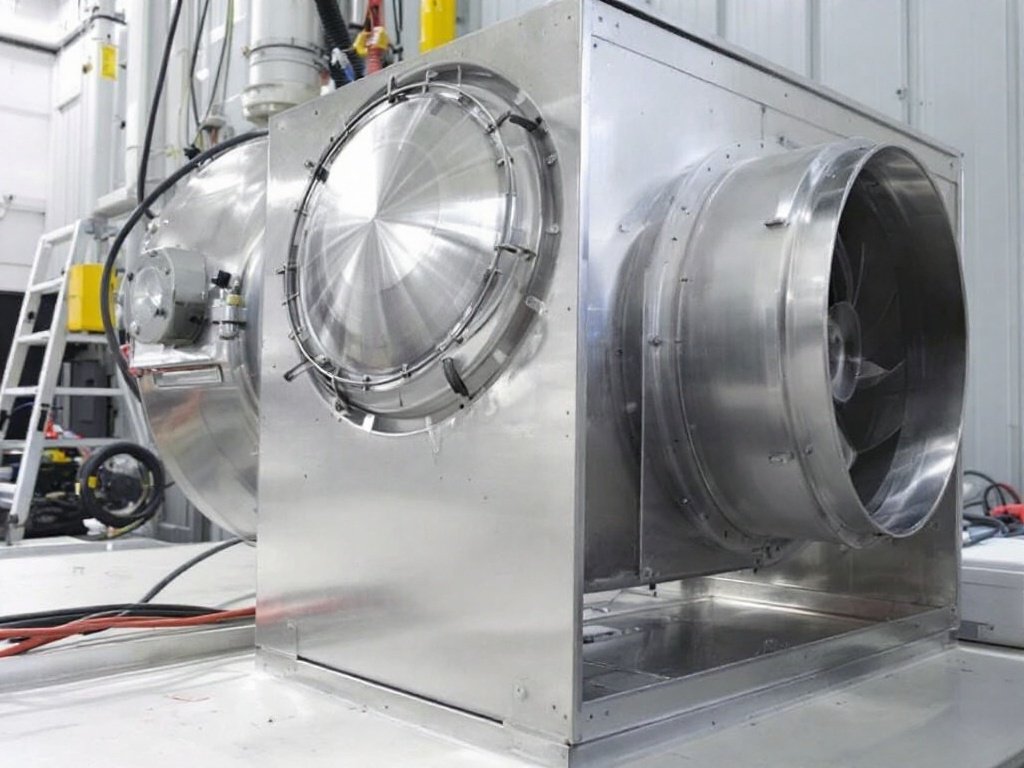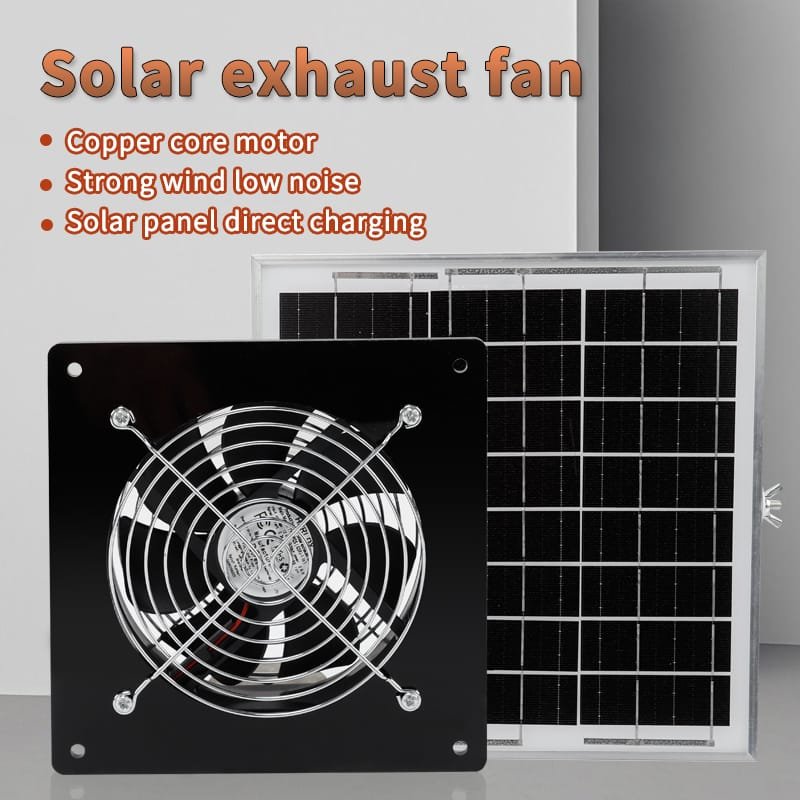What Is the Difference Between Centrifugal Fan and Inline Fan
Centrifugal and inline fans differ in airflow direction, pressure, and application, with inline fans moving air linearly.
Read More
Exhaust fan are integral components in various industrial settings, facilitating the removal of contaminants, heat, and moisture from the workspace. Two common types of exhaust fans used in the machinery industry are downblast and upblast exhaust fans, each with distinct characteristics and applications.
This blog post will delve into the key differences between downblast and upblast exhaust fans, examining factors such as airflow direction, motor protection, grease handling, typical installation sites, and applications. By understanding these distinctions, professionals can make informed decisions when selecting the appropriate exhaust fan for their specific needs.
An upblast exhaust fan, also known as a roof upblast fan, is a ventilation device designed to remove air from a building or structure by directing the airflow vertically upward. These fans are typically mounted on the roof and feature a motor and impeller housed within a weather-resistant casing. The impeller draws air from the interior space and expels it through the top of the fan, effectively exhausting heat, fumes, moisture, and other unwanted airborne particles.
Upblast exhaust fans are commonly used in commercial and industrial settings where effective ventilation is essential for maintaining a safe and comfortable working environment. They are particularly well-suited for applications involving high temperatures, such as kitchen exhaust systems in restaurants, as the upward airflow direction helps to prevent the accumulation of grease and other debris on the fan’s components.
The design of upblast exhaust fans allows for efficient air removal without the risk of backdrafts or the ingress of rainwater. The fan’s housing is typically equipped with a drain trough to channel any moisture away from the interior components, ensuring reliable operation even in inclement weather conditions.
A downblast exhaust fan, also referred to as a roof downblast fan, is a ventilation device that removes air from a building or structure by directing the airflow vertically downward. Like upblast fans, downblast exhaust fans are mounted on the roof and consist of a motor and impeller within a weather-resistant housing. However, the key difference lies in the direction of the airflow.
In a downblast exhaust fan, the impeller draws air from the interior space and expels it through the bottom of the fan, directing the airflow downward and away from the building. This design is particularly advantageous in applications where the expelled air must be directed away from the roof or adjacent structures to prevent the recirculation of contaminated air or to minimize noise pollution.
Downblast exhaust fans are commonly employed in industrial settings where the presence of dust, fumes, or other pollutants in the exhausted air could pose a risk if directed upward. By expelling the air downward, these fans help to minimize the potential for contamination of the roof or nearby air intakes.
The primary difference between downblast and upblast exhaust fans lies in the direction of airflow. Downblast exhaust fans, as the name suggests, direct the airflow downwards, away from the fan. This design allows for the exhaust air to be expelled towards the ground or into a duct system located below the fan.
In contrast, upblast exhaust fans propel the airflow upwards, away from the fan and towards the roof or ceiling. This configuration is ideal for venting exhaust air through roof penetrations or into ductwork positioned above the fan.
Another key distinction between these two types of exhaust fans is the level of protection provided to the motor. In downblast exhaust fans, the motor is typically located in the airstream, directly exposed to the exhausted air. This placement can subject the motor to grease, moisture, and other contaminants present in the exhaust, potentially leading to premature wear and maintenance issues.
Upblast exhaust fans, on the other hand, often feature a motor that is mounted out of the airstream, either on top of the fan or to the side. This positioning shields the motor from direct contact with the exhausted air, providing an added layer of protection against grease, moisture, and other harmful substances. As a result, upblast exhaust fans typically require less frequent maintenance and offer improved motor longevity compared to downblast models.


The ability to handle grease is another important factor to consider when comparing downblast and upblast exhaust fans. Downblast exhaust fans, with their downward airflow, can allow grease and other contaminants to accumulate on the fan blades and housing. Over time, this buildup can lead to decreased performance, increased noise levels, and potential fire hazards.
Upblast exhaust fans, however, are generally better suited for handling grease-laden air. The upward airflow direction helps prevent grease from settling on the fan components, reducing the risk of accumulation and associated issues. Many upblast exhaust fans also incorporate grease collection systems or traps to further minimize the impact of grease on the fan’s performance and safety.
Downblast and upblast exhaust fans are often installed in different locations due to their airflow characteristics. Downblast exhaust fans are commonly found in applications where the exhaust air needs to be directed downwards, such as in commercial kitchens with lower ceiling heights or in situations where the fan is mounted on an exterior wall.
Upblast exhaust fan, on the other hand, are typically installed on rooftops or in applications where the exhaust air needs to be directed upwards and away from the building. This makes them a popular choice for industries such as restaurants, manufacturing facilities, and warehouses, where the fan can be mounted on the roof and the exhaust air can be easily vented to the outside.
Downblast exhaust fans are commonly used in applications such as:
Upblast exhaust fans are frequently employed in applications that require:
A downblast exhaust fan pulls air up through ducts and then expels it downward toward the roof surface. It is used mainly for general ventilation and not suitable for grease or smoke removal.
An upblast exhaust fan pulls air up and then blasts it upward, away from the roof. It is designed for grease-laden air and smoke, commonly used in commercial kitchens.